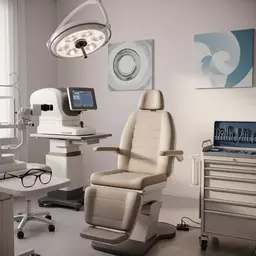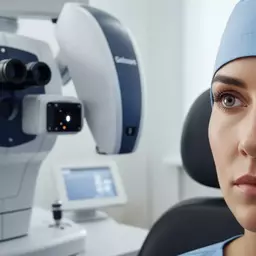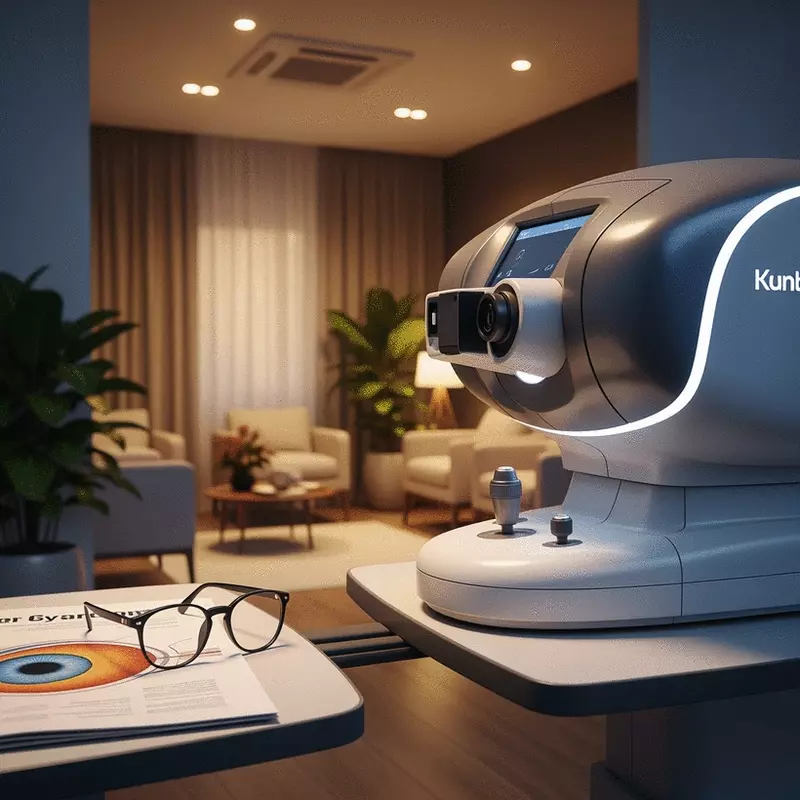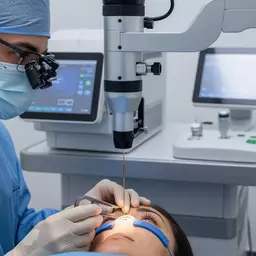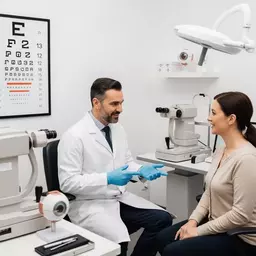LASIK, PRK, SMILE: Value Comparison
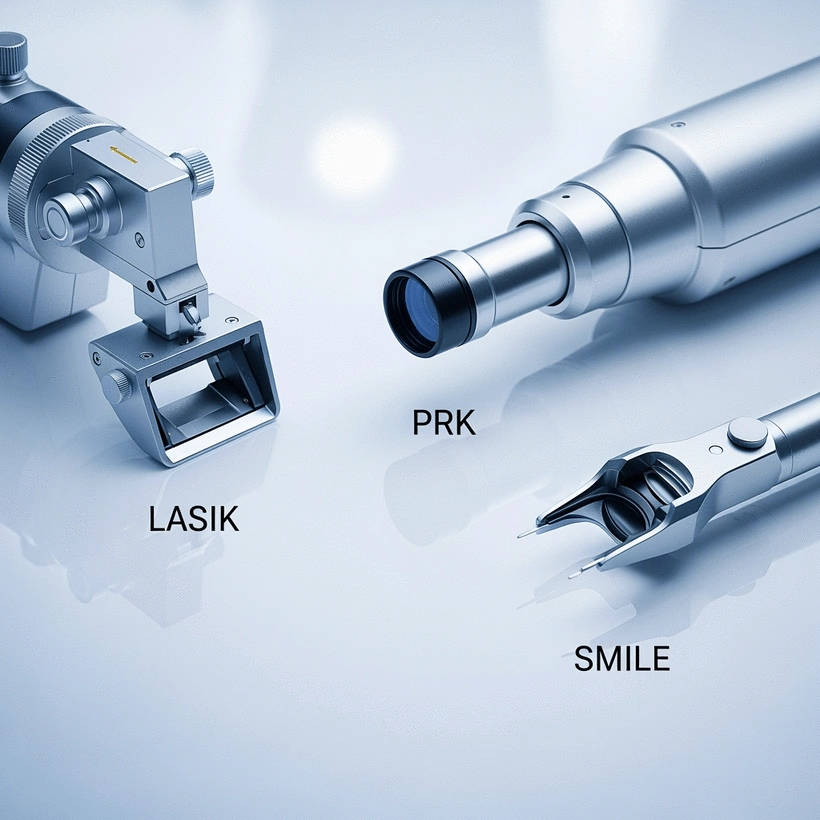
Have you ever considered how a simple decision about your eye care can profoundly impact your life? Understanding the nuances between laser eye surgery options like LASIK, PRK, and SMILE is essential to making an informed choice tailored to your needs.
What You Will Learn
- LASIK offers rapid visual recovery but may involve flap-related complications.
- PRK is ideal for those with thinner corneas and provides long-term effectiveness with a longer initial recovery time.
- SMILE is a minimally invasive option that minimizes discomfort and promotes faster healing.
- Understanding your unique eye characteristics is vital for selecting the best procedure for your lifestyle.
Comparing Laser Eye Surgery Procedures: LASIK, PRK, and SMILE
This visual highlights the key differences and characteristics of LASIK, PRK, and SMILE laser eye surgery procedures, focusing on invasiveness, recovery, and technological maturity. For a deeper dive into the specifics of each procedure, explore our detailed guide on laser eye surgery types explained.
Procedure Comparison
LASIK
- Method: Flap creation
- Invasiveness: Medium
- Recovery: Rapid (hours)
- Discomfort: Minimal post-op
- Notes: Potential flap complications
PRK
- Method: Surface ablation
- Invasiveness: Medium
- Recovery: Longer initial
- Discomfort: More post-op
- Notes: Good for thin corneas
SMILE
- Method: Small incision
- Invasiveness: Minimally invasive
- Recovery: Quicker, less discomfort
- Discomfort: Minimal post-op
- Notes: Preserves corneal nerves
Key Factors
- Visual Outcomes: All effective
- Technological Maturity: LASIK longest
- Customization: Wavefront tech
- Safety: All refined
- Consultation: Crucial for choice
Understanding Laser Eye Surgery Options: LASIK, PRK, and SMILE
As someone who has dedicated over a decade to eye care, I often encounter questions regarding the different types of laser eye surgery available. Understanding the options—LASIK, PRK, and SMILE—is essential for making informed decisions about your vision correction journey. Each procedure has its unique benefits and considerations, so let’s break them down to find the right fit for you!
Overview of LASIK, PRK, and SMILE Procedures
Each laser eye surgery technique aims to correct refractive errors, but they differ in their methods and recovery experiences. Here's a brief overview of each:
- LASIK: This procedure involves creating a flap in the cornea to reshape the underlying tissue with a laser.
- PRK: Rather than creating a flap, PRK removes the outer layer of the cornea, allowing the laser to reshape the surface directly.
- SMILE: A minimally invasive technique that requires only a small incision to remove tissue from the cornea without creating a flap.
As we delve deeper, you'll see how each method affects your recovery and comfort levels. When considering these options, it's also helpful to understand the factors affecting laser eye surgery cost to plan your budget effectively.
How LASIK Works: Flap Creation and Recovery
During a LASIK procedure, a thin flap is created in the cornea using a microkeratome or a laser. This flap is then lifted to allow the laser to reshape the corneal tissue beneath. The recovery process is typically quick, with many patients experiencing improved vision within hours! However, it’s crucial to follow post-operative care guidelines to ensure optimal healing.
Exploring PRK: Surface Ablation Technique
PRK differs significantly from LASIK by removing the outer layer (epithelium) of the cornea before the laser treatment. This technique can be beneficial for patients with thinner corneas or certain corneal irregularities. Although the initial recovery may take longer than LASIK, the long-term results can be equally effective.
SMILE: The Minimally Invasive Approach
SMILE stands for Small Incision Lenticule Extraction. This procedure involves creating a small incision in the cornea to remove a piece of tissue using the laser. One of the main advantages of SMILE is that it typically leads to less post-operative discomfort and a faster recovery due to the preservation of corneal nerves. Patients often appreciate the reduced invasiveness of this technique!
Comparative Analysis of Procedure Invasiveness
When comparing these procedures, understanding their invasiveness can help you make a more informed choice. Each method has its own influence on recovery times and potential risks, which is why discussing these factors with your eye care professional is vital.
Flap Creation and Its Impact on Recovery
The flap creation in LASIK can lead to different recovery experiences compared to PRK or SMILE. While LASIK offers immediate visual improvement, there’s a risk of flap-related complications. In contrast, PRK's absence of a flap means a longer healing period, but often results in fewer complications in the long run.
Incision Size: How It Affects Comfort and Healing
SMILE’s small incision significantly reduces the disruption to the cornea and tends to promote a more comfortable healing process. Patients may experience less irritation and dryness post-surgery. With LASIK, the flap can create more instability initially, while PRK's surface ablation requires more time for the epithelial layer to regenerate.
Technological Maturity and Safety of Each Procedure
All three procedures have undergone extensive refinement and testing, but their technological maturity varies. LASIK has been around the longest and is widely regarded for its safety and effectiveness. PRK has seen significant advancements as well, making it a reliable option for many patients. Meanwhile, SMILE is newer but shows promising results in terms of safety and patient satisfaction.
Understanding the Role of Laser Technology in Eye Surgery
Laser technology plays a crucial role in the precision of eye surgeries. Understanding these advancements can help patients feel more confident about their choices.
The Importance of Wavefront Technology in Vision Correction
Wavefront technology is a cutting-edge approach that allows for customized treatments based on an individual's unique eye characteristics. This personalization can lead to improved visual outcomes and reduced side effects, making it a valuable option for many patients.
Advancements in Laser Technology: Improving Surgical Precision
Recent advancements in laser technology have enhanced surgical precision and safety across all three procedures. For instance, femtosecond lasers used in LASIK and SMILE create incredibly precise incisions, reducing the risks associated with traditional methods. These developments contribute to better recovery experiences and overall satisfaction! For further insights into the costs associated with these advanced procedures, you can review a detailed LASIK vs. PRK vs. SMILE cost comparison.
We Want to Hear From You!
Have you or someone you know undergone laser eye surgery? What was your experience with LASIK, PRK, or SMILE? Share your thoughts below:
Making an Informed Decision: Which Procedure Offers the Best Value?
Choosing the right laser eye surgery is a significant decision that can greatly impact your quality of life. Each procedure—LASIK, PRK, and SMILE—has distinct characteristics, visual outcomes, and recovery times. It’s important to evaluate these factors based on your unique needs and lifestyle. Here’s a summary of key differences to consider:
- Visual Outcomes: LASIK tends to offer rapid visual recovery compared to PRK, which may take longer as it involves surface healing.
- Recovery Times: SMILE is generally less invasive, leading to quicker recovery and minimal discomfort.
- Long-Term Benefits: Each procedure has its advantages; discussing these with your doctor will help you find the best fit.
By weighing these options, you can make a choice that not only meets your vision correction needs but also aligns with your lifestyle and comfort levels. For example, if you have a busy schedule, you might prioritize a procedure that allows you to return to daily activities sooner.
Encouragement to Consult with an Eye Care Professional
Speaking with a qualified eye care professional is crucial for making an informed decision. A personalized assessment can help determine which procedure is best suited for your individual circumstances. Remember, this isn’t just about correcting vision; it’s about enhancing your overall quality of life!
- Discuss Your Health History: Share any pre-existing conditions that may affect your candidacy for certain procedures.
- Ask About Experiences: Inquire about the surgeon’s experience with each procedure to better understand potential outcomes.
- Visual Expectations: Be clear about what you hope to achieve with surgery, as this will guide your surgeon's recommendations.
Preparing for your consultation can significantly impact the quality of the discussion. Consider jotting down any questions or concerns you may have, as this can lead to a more productive conversation.
Next Steps: Preparing for Your Consultation
Before your consultation, it's helpful to gather information and prepare a list of questions. Here are some key areas to focus on:
- Understanding Costs: Ask about the total cost of the procedure, including potential hidden fees.
- Expected Recovery: Get a clear picture of the recovery timeline and any necessary follow-up appointments.
- Post-Operative Care: Clarify what aftercare will be involved to ensure a smooth recovery.
By being proactive and informed, you empower yourself to engage in meaningful discussions with your surgeon, leading to the best possible outcomes.
Understanding the Role of Your Eye Surgeon in the Decision-Making Process
Your eye surgeon plays a pivotal role in guiding you through the decision-making process. They will assess your candidacy for each procedure based on:
- Corneal Thickness: This is crucial in determining suitability for LASIK.
- Refractive Error: The type and severity of your vision issue influence the recommended procedure.
- Overall Eye Health: Pre-existing conditions may affect which surgery is best.
Ultimately, their expertise will help tailor a treatment plan that aligns with your goals. At VisionCost Insights, I emphasize the importance of this collaboration. Remember, being informed and involved in your care can lead to a positive vision correction experience!
Frequently Asked Questions About Laser Eye Surgery
- What are the main differences between LASIK, PRK, and SMILE?
- LASIK involves creating a corneal flap for laser reshaping and offers rapid recovery. PRK removes the outer corneal layer, ideal for thinner corneas, with a longer initial recovery. SMILE is a minimally invasive procedure creating a small incision to remove corneal tissue, leading to quicker recovery and less discomfort.
- Which procedure offers the fastest recovery?
- LASIK typically offers the fastest visual recovery, often within hours. SMILE also provides a quick recovery with minimal post-operative discomfort due to its less invasive nature. PRK has a longer initial recovery period due to the surface ablation.
- Is one procedure safer than the others?
- All three procedures—LASIK, PRK, and SMILE—have undergone extensive refinement and are considered safe and effective. LASIK has the longest track record. PRK is a reliable option, especially for patients with thinner corneas. SMILE, while newer, shows promising safety and patient satisfaction results.
- Who is an ideal candidate for PRK?
- PRK is often recommended for individuals with thinner corneas or those involved in professions or activities where a corneal flap (as in LASIK) could be a concern. It's also suitable for patients with certain corneal irregularities.
- How important is a consultation with an eye care professional?
- A consultation with a qualified eye care professional is crucial. They will assess your eye health, corneal thickness, refractive error, and overall medical history to determine which procedure is best suited for your individual needs and help manage your expectations for visual outcomes and recovery.
Recap of Key Points
Here is a quick recap of the important points discussed in the article:
- LASIK: Quick recovery with flap creation for reshaping cornea, but may have flap-related complications.
- PRK: No flap creation, suitable for thinner corneas; longer recovery but fewer complications in the long run.
- SMILE: Minimally invasive with smaller incisions, leading to reduced discomfort and quicker recovery.
- Visual Outcomes: LASIK offers rapid visual recovery, while PRK may take longer due to surface healing.
- Consultation Importance: Discuss your health history, surgeon's experience, and visual expectations for the best results.
